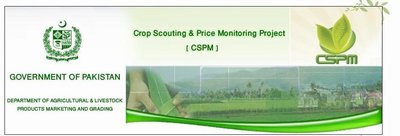Post Source: The News – By Aftab Maken
Saturday, August 29, 2009
ISLAMABAD: Paddy growers have asked the federal government to fix minimum guaranteed price of the commodity like that of wheat to make the crop more profitable for farmers.
Three main varieties of paddy including super basmati, basmati and Irri-6 are cultivated in Punjab, interior Sindh and Balochistan and the government sets intervention price of the commodity before harvest to protect the farmers.
Like last year, the Ministry of Food and Agriculture has tabled a summary before the Economic Coordination Committee of the cabinet, recommending an intervention price of Rs1,250 per 40kg for super basmati, Rs1,000 for basmati 385 and Rs600 for Irri for 2009-10 crop keeping in view all factors.
“The federal government, instead of announcing an intervention price, shall fix support price of paddy to safeguard the interests of growers and consumers as rice is the second largest export earner,” a director of the Farmers Associates Pakistan (FAP) said.
If the government did not take up this burning issue, the FAP director warned the country would not only lose foreign exchange but would also have to depend on import of the staple food.
“The best option is to increase paddy price by 10 per cent and double PASSCO & TCP’s procurement targets from last year so that rice farmers could get a better bargain,” the Basmati Growers Association (BGA) said in a letter to secretary Ministry of Food and Agriculture.
In light of increased cost of production, the Association asked the food ministry to recommend a 10 per cent increase in the indicative price of paddy for 2009-10.
“While there is no check on under-invoicing, export parity prices do not clearly portray actual prices and are therefore of no relevance. Farmers suggest that policy announcements of the neighbouring country be taken as a reference for assistance in formulation of a farmer-friendly policy,” the letter said.
Prices of paddy have risen by 5 per cent this year which if calculated with current rupee-dollar parity comes to Rs700 per 40kg for Irri-6.
The Association said a definite policy on intervention through the Pakistan Agriculture Storage and Supplies Corporation (PASSCO) and the Trading Corporation of Pakistan (TCP) should also be announced along with increase in prices of paddy.




Recent Comments